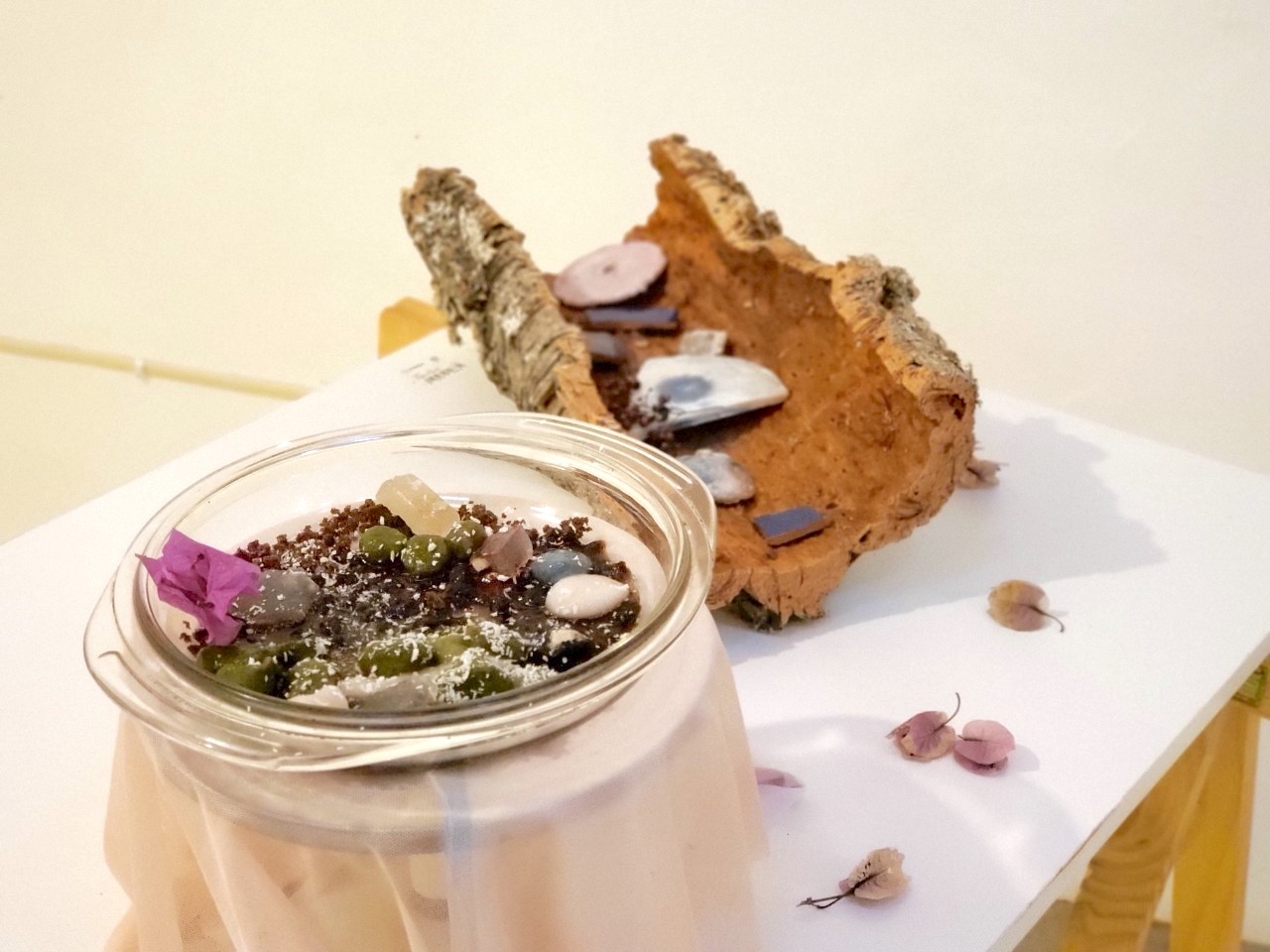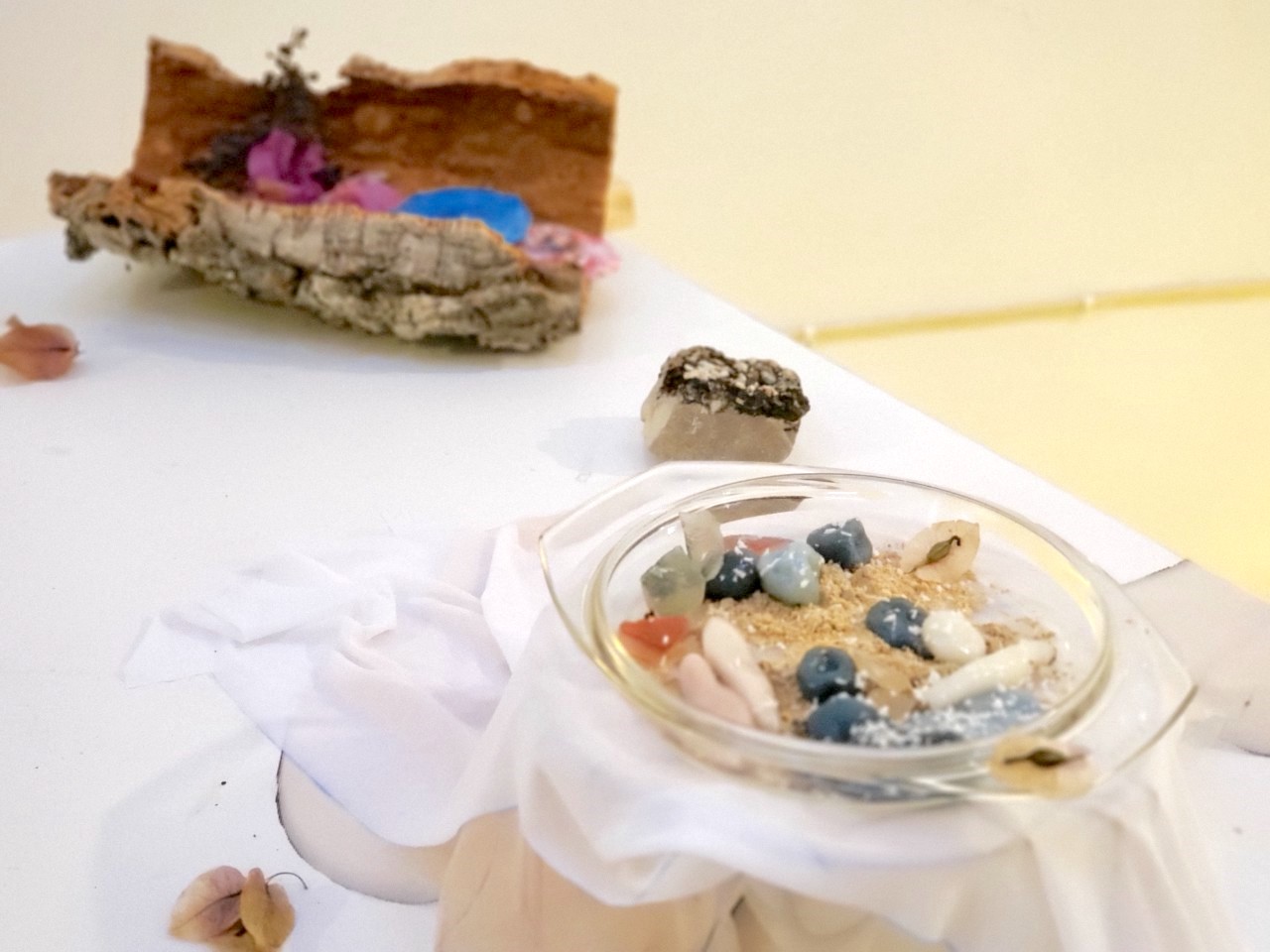Transformation
Transformation
2019
Edible part: Shiratama mochi dumplings, agar-agar jellies, coconut fibres, roasted soybean flour, muscovado sugar
Others: Branches of olives, branches of eucalyptus, cork, pottery shard, stones, bougainvillaea, recycled plastics
Dimensions variable
It represents a coral reef made of materials that I collected in Messejana. This work questions in-between something natural and artificial, and participants and creators.
Making period
Seven days: collecting local materials, trying different layouts, painting tree branches, making shiratama mochi dumplings and agar-agar jellies (which were dried for five days), setting up the installation
Background
While I was walking around in Messejana, I noticed that they are some garbage, especially plastics, in streets and thought it is a pity.
On one hand, when I saw another artist melting recycled plastics to make a sculpture, I wondered how many people know where plastics originally come from and how they are made. Then, I decided to make an installation to remind people of the fact that Petroleum, the main material of plastics, is the transformation of dead organisms and planktons. Though plastics have a long life history in themselves, people are unconscious of the fact and likely to throw them away without any hesitation.
To make the installation but waste less, I collected local materials, which were not any more used, such as fallen leaves, corks and others that local artisans don’t use any more.
Nature always changes. Pink, yellow and its mixture colours of bougainvillaeas express it.
For an edible part, I used shiratama mochi dumplings and agar-agar jellies to express corals and planktons.
Date:
2020-01-22
Category:
Art



